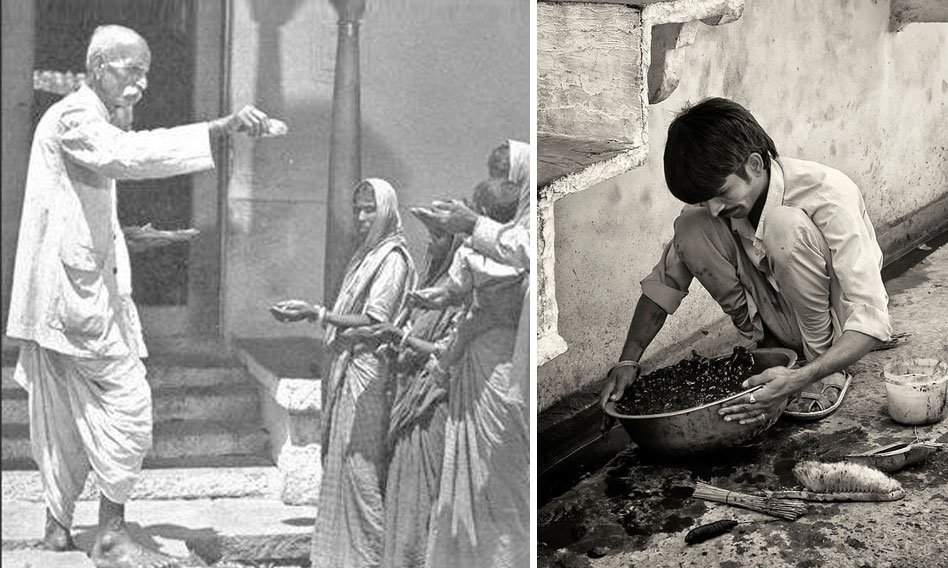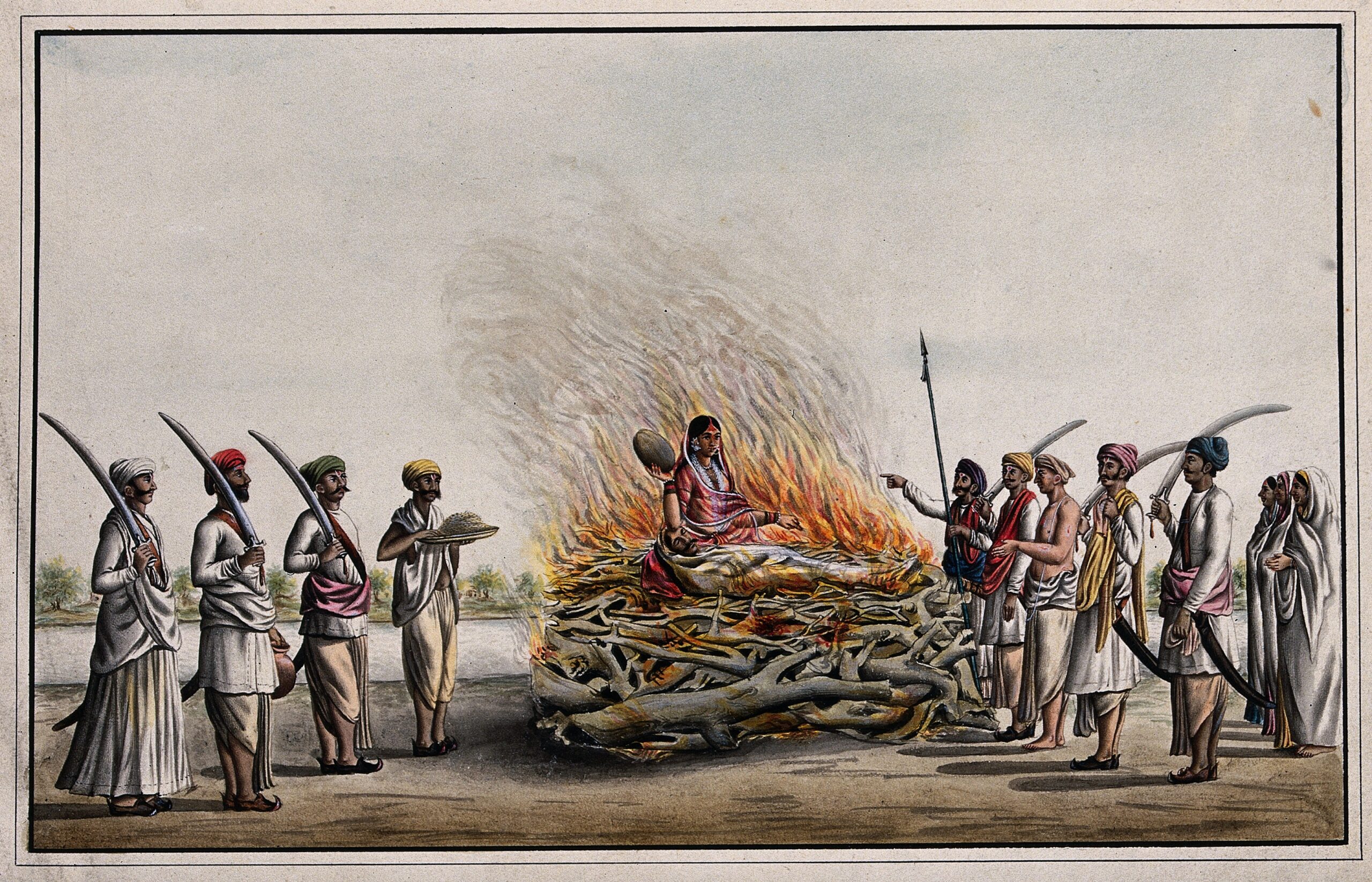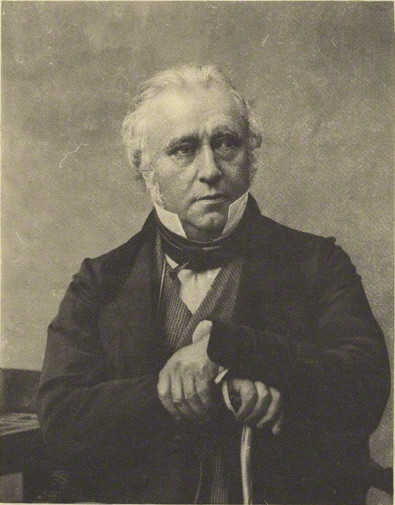There were numerous social issues were present in British India like Sati pratha, caste system, Untouchability, etc. India’s traditional societal practices were increasingly unfolded to have caused enormous repression of women, lower castes, and even the upper caste women. One of the impacts of East India Company’s rule was the growing exposure to Western values. As the exploitation of colonialism was increasingly exposed, a trend of social awakening accompanied the Indian social life. The introduction of Western education was the main reason for the awakening in India. In 1824, the first girls’ school was inaugurated in Bombay.
However, it may be noted that the British educational survey in Madras, 1882, acknowledged the abysmal enrolment of girlchild in schools. The challenge continued as women’s literacy level stood at merely 6 percent in 1947. Towards the beginning of the 19th century, there was significant progress in identifying the social evils in India. The Sati system, child marriage, female infanticide, casteism, untouchability, illiteracy, etc. were some of the challenges that confronted India’s social life. With the turn of the 19th century, there evolved a section of Indians who were committed to reforming Indian social orthodox values.
Major Social Issues in India
Doing away with casteism, untouchability, illiteracy, the Sati system, child marriage, polygamy, etc., became the major social concerns in India. The significance of identifying social evils was to gradually help in consolidating a new social consciousness and to critique the colonial situation in India. The caste division of Indian society also became a major moot point as the modern education system began to question it. The caste system as one of the oldest social systems stratified Hindu society into four varnas namely – Brahmins, Kshatriyas, Vaishyas, and Sudras.

The reformers were concerned with oppressive practices associated with the caste system. The teachings of Manusmriti – a Hindu law book – which justifies the caste system and exclusion of women had been widely questioned. The lives of the outcastes Dalits that did not come under the scheme of Hindu societal stratification faced harsher social exclusion. The caste stratification that bestowed several privileges on the upper caste resulted in social hegemony and denial of dignity to the lower castes. The 19th century India can be regarded as a century of turning point and Indian renaissance as the social evils were identified which were either openly criticized or called for reformation.
Sati System

The Sati system which promoted Hindu women to burn themselves along with their deceased husbands was no more appreciated by the section of educated Indians. With the emergence of a first set of reformers like Ram Mohan Roy, Ishwar Chandra Vidyasagar, M.G. Ranade, etc., such demeaning practices were challenged. The reformers became a force to be reckoned with as new social organizations were formed.
Through the organizations, social movements were then taking up the cause of women’s education, abolition of Sati, untouchability, etc. Female infanticide was another cruel social issue in India. New-born girlchildren were subject to strangulation thereby depriving their right to life. When they grew up, the girlchildren were subject to a dowry system which was unbearable for socially and economically backward families.
Another important dimension of the Indian social crisis was the lack of a modern rule of law which resulted in the continuation of social evils and denial of social equity in India. It was such a concern that led the reformers to appreciate Western jurisprudence and education. Widow re-marriage was strictly prohibited as no traditional law existed to safeguard women in India. Additionally, women of all sections in India were deprived of the right to property inheritance. The denial of the right to property to women was identified as the main reason for women’s inability to self-sustain and gain social freedom and dignity.
Caste System
The Caste system-induced untouchability system practiced in India was a major concern for the reformers and imperial scholars. The lower caste persons in India were subject to menial jobs and were deprived of access to public wells, temples, and schools. They were also not allowed to get employment in governmental and military services. It created a social crisis as it created animosity within Indian society.
The rise of Dr. B R Ambedkar exemplified the cause of socially depressed classes in India and the assertive politics against the caste system and majoritarian nationalism in India. Such a social conflict was seen when the depressed classes in India began to demand a separate electorate system in the later years of India’s struggle for independence.
The Rise of Indian Women
India’s simmering social turmoil was felt more than ever by the reformers belonging to most of the religious communities. The practice of child marriage was identified to be a major cause of women’s long-term suffering. The status of girls’ education was reflected in the Hunter Education Commission which noted that only 0.2 percent of women were literate in British India as of 1882. The status of outcaste of women’s education was almost nil. The contribution of India’s pioneering women reformers stands out distinctively.
Pandita’s wedlock with a lower caste man led to her ostracization from her caste. She began to raise several objections to the religious values of Hinduism, especially concerning Manu, which she considered was the main cause of Hindu women’s suffering. Her book, The High Caste Hindu Women, published in 1888 discusses several sections of Manusmriti that she considered undignified for Hindu women.
While quoting a dictum from Manu which reads, ‘Her father protects her in childhood, her husband protects her in youth, and her sons protect her in old age; a woman is never fit for independence’ (Manu ix., 2, 3) she pointed how women’s dependence on men was culturally and religiously embedded. Ramabai founded the Arya Mahila Samaj in, 1882 which took up the cause of education for women, widows, orphans, and lower castes women. Her other book Stri Dharma Niti (1882) advocated for women’s education, self-reliance without compromising her distinct role as an individual and a mother.
The contribution of Ramabai and several other earlier reformers in radicalizing women’s questions and social change in India needs appreciation for they were quite ahead of their times.
Some Impacts of Social Reformist Movement to resolve Social Issues
The contribution of reformers led to the growing introduction of education to women and the democratization of social relations. The introduction of vernacular print media enhanced social awareness in India. Samachar Darpan was the first Vernacular Indian newspaper published in 1818. Samvad Kaumudi, 1819, of Raja Ram Mohan also played a critical role in the Bengal renaissance. As a result, in 1824 the first girls’ school was founded in Bombay. English Education was introduced in India in 1835 by Lord Macaulay.

It came to be known as Minute on Education which explained the reasons for the need to spend on English and science education in India. As time progressed, the Bengal Sati Regulation was promulgated in 1829. A law banning child marriage was passed in 1860. The Hunter Education Commission also approved the need for female education in 1881.
It can be said that towards the 20th century, several women’s associations were formed. The Bharat Mahila Parishad was formed in 1904 while the National Council of Women in India was founded in 1925. Two years after, the All India Women’s Conference was formed in 1927. The early reformers, irrespective of their gender affiliations, succeeded in questioning the caste division of Indian society. It upheld a sense of collective political claim which transformed into a countrywide anti-colonial sentiment.
The reformers were successful in fostering the feeling of common cause for democracy, secularism, and rule of law to continuously reform and modernize Indian social systems. The Muslim reformists through the Deoband Movement which was launched in 1866 and the Aligarh movement, in 1875 advocated for education for Muslims in India.
To summarise, it was not only the reformists but also the revivalist who equally contributed to the awakening of the Indian masses. The reformists and revivalists of 19th century India differed in terms of their approach to tradition and religion. The reformists and revivalists, however, agreed on certain fundamental issues concerning women’s education, banning of child marriage, dowry, banning infanticide, Sati, widow-remarriage, untouchability, etc.
The continuing crisis of the orthodox social system in India prevailed perhaps as the Hindu and Muslim reformers were largely confined to unfolding religious perversions and distortions. They were unable, in the majority of the instances, to stand for complete structural transformation, as was seen in the debate between Dr. B.R. Ambedkar and Mahatma Gandhi on the caste system in India.

